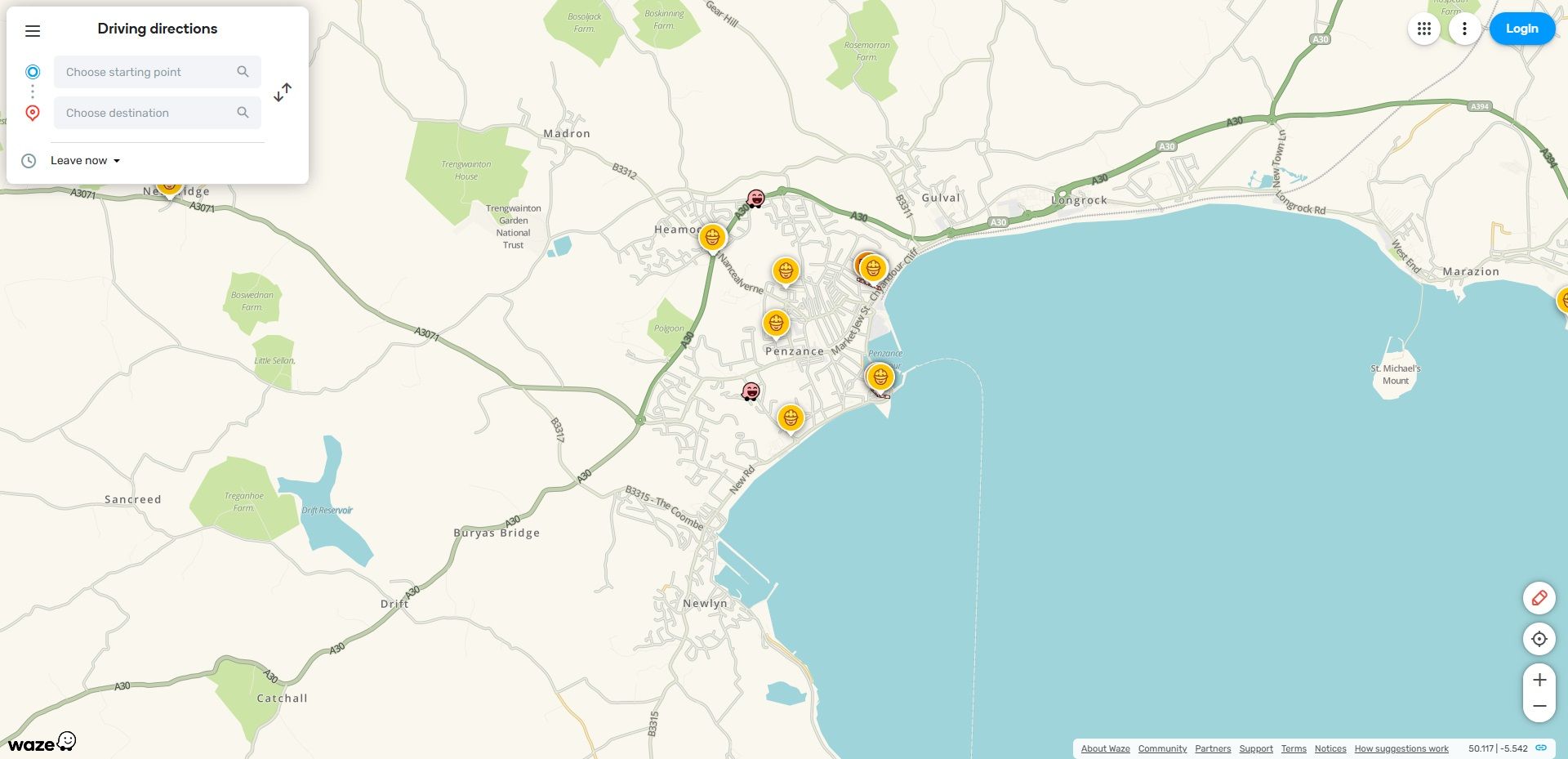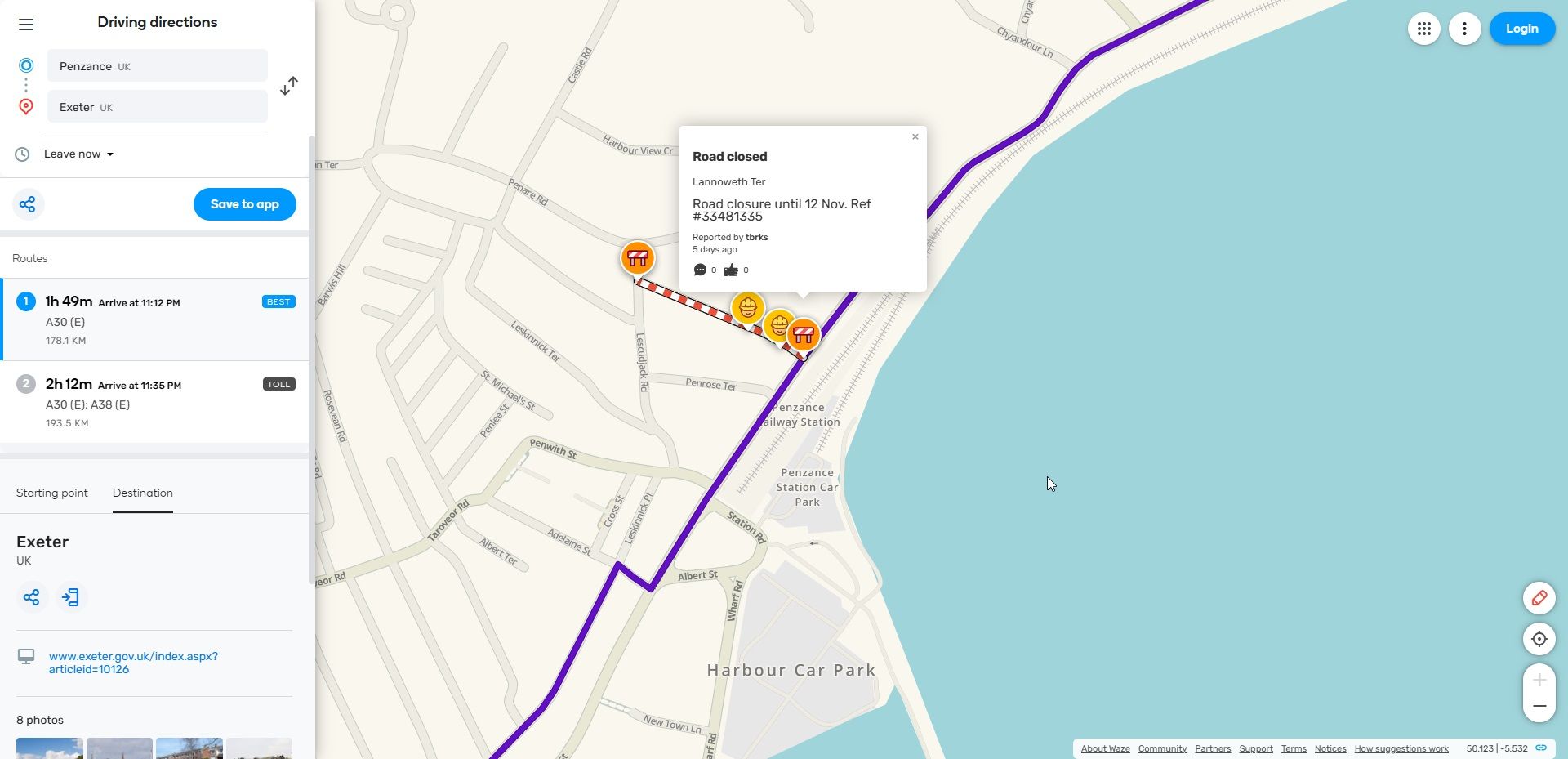Key Takeaways
- Waze offers real-time updates from users for a more dynamic driving experience.
- Unique features like alternative routing and voice customization enhance navigation.
- Waze excels in real-time road conditions but may drain the battery faster and feel crowded.
After getting tired of Google Maps, I switched to Waze, and I’m not looking back. With real-time, user-powered updates, Waze transforms daily drives into smoother, more informed journeys that make navigating traffic feel refreshingly efficient.
Why I Switched from Google Maps to Waze
Google Maps is widely known as one of the best navigation tools with a ton of features, but Waze’s real-time updates bring a different energy to driving. Waze has a whole community of users who actively report everything from traffic jams to accidents and speed traps, so you’re getting a much more dynamic experience. It’s like having thousands of extra eyes on the road, keeping you informed about what’s coming up. For me, this sparked the move away from Google Maps to Waze.
To set your vehicle type, and have Waze provide vehicle tailored routes
Navigate to Settings > Vehicle details > Vehicle type.
Key Waze Features That Make a Difference
Waze offers a suite of features that significantly enhance the navigation experience. Its community-driven reporting system allows drivers to share real-time updates on traffic conditions and hazards, ensuring you’re always informed about sudden changes on the road. The app’s alternative routing feature leverages live traffic data to suggest faster routes during congestion, keeping your journey smooth and efficient. Personalization is also a key aspect of Waze; you can customize the navigation voice to add a touch of fun to your drives.
For those who like to plan ahead, Waze’s trip scheduling and reminders can be a lifesaver. Sync it up with Google Calendar, and it’ll alert you when it’s time to head out. Waze enhances the user experience by offering speed limit alerts, helping drivers avoid unexpected speed traps.
If you prefer routes without tolls or ferries, just modify your settings. In Settings > Navigation, toggle on ‘Avoid toll roads’ and ‘Avoid ferries’.
Pros and Cons of Using Waze Over Google Maps
Waze’s standout feature is its real-time updates, fueled by a community of drivers who share live information on traffic conditions, accidents, and road hazards. This collective input ensures you’re navigating with the most current data, offering a significant advantage during unpredictable commutes. The app fosters a sense of camaraderie among users, allowing you to contribute to and benefit from shared road intelligence. Additionally, Waze integrates seamlessly with popular music streaming services, enabling you to enjoy your favorite tunes or podcasts without switching apps.
However, Waze’s dynamic, real-time operations can lead to increased battery consumption compared to other navigation apps. The interface, rich with various icons and alerts, may appear cluttered to some users, potentially making it challenging to focus on essential navigation details. Despite these considerations, many find that the benefits of up-to-the-minute information and a connected driving community outweigh these drawbacks.
Is Waze Worth It?
In my experience, Waze has become an indispensable tool for navigating my daily commutes and longer trips. Its real-time navigation and community-driven features have consistently provided me with up-to-date information on traffic conditions, accidents, and hazards, allowing for dynamic route adjustments that help me avoid delays and reach my destinations more efficiently. While I’ve noticed that continuous use of Waze can lead to increased battery consumption, the benefits of timely updates and the sense of connection with a community of drivers far outweigh this drawback. Overall, Waze has significantly enhanced my driving experience, making it more informed and connected.

 by Ind legend#Shorts#YoutubeShorts#bgmishorts
by Ind legend#Shorts#YoutubeShorts#bgmishorts

